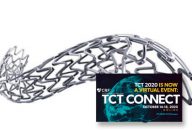Dual antiplatelet therapy (DAPT) one month after angioplasty with Xience stent was approved in Europe for patients with high risk of bleeding. The CE Mark approval comes after studies Xience 28 and Xience 90 are published. Immediately after authorization, Abbot was fast to announce what they consider to be the shortest approved scheme with the most…
More Evidence for Short Term DAPT: Approaching “the Class Effect”
Patients at high risk of bleeding undergoing coronary angioplasty with Orsiro stent can be considered for a short dual antiplatelet scheme. These data come from the SMART-CHOICE study recently published in JAHA, adding the Orsiro stent to the list of devices supporting 3-month DAPT. This study included 2993 patients undergoing coronary angioplasty randomized to 3…
Angioplasty in Aspirin-Free Stable Patients with Prasugrel: Innovation Continues
Potent P2Y12 receptor inhibitors, such as prasugrel and ticagrelor, have been tested mainly in a setting of acute coronary syndromes. There is little evidence on stable patients, particularly for prasugrel. Designing a study with that purpose seemed challenging enough, but adding aspirin discontinuation in patients without a particularly high bleeding risk took this research to…
Is Loading NSTEMI with DAPT Convenient?
Pretreating non-ST elevation acute myocardial infarction (NSTEMI) patients with P2Y12 receptor inhibitors is not associated with improved clinical outcomes as it is to increased bleeding. NSTEMI patients are often treated with platelet antiaggregants in the daily clinical practice despite the lack of evidence for its benefits. This Swedish registry prospectively included 64857 patients undergoing NSTEMI…
TCT 2020 | Xience in Favor of Short Dual Antiaggregation Therapy with High Bleeding Risk
Following with aspirin alone after a short period of dual antiaggregation therapy (DAPT), 1 to 3 months, did not increase ischemic events in patients receiving a Xience stent while significantly reducing bleeding. This study endorses the safety of short DAPT with contemporary drug eluting stents (DES) in patients presenting high bleeding risk. The XIENCE Short…
How To De-Escalate Prasugrel After Acute Coronary Syndrome?
Patients who undergo coronary angioplasty after acute coronary syndrome could de-escalate dual antiplatelet therapy with prasugrel to maintain the protection against ischemic events while lowering their hemorrhagic risk. The HOST-REDUCE-POLYTECH-ACS study (recently published in The Lancet) included 2338 patients who underwent coronary angioplasty in a setting of acute coronary syndrome. Patients were randomized to a year-long…
RE-DUAL PCI: Anti-Thrombotic Management in Patients with Atrial Fibrillation and PCI
RE-DUAL PCI outcomes have been published by the New England Journal of Medicine along with their presentation at ESC 2017. The traditional triple anti-thrombotic scheme with dual antiplatelet therapy and warfarin for patients with atrial fibrillation undergoing coronary angioplasty seems to have been left behind. This new study showed that the combination of dabigatran with a P2Y12…
TOPIC: Benefits of Switching Dual Antiplatelet Therapy in Patients with ACS
Newer P2Y12 blockers are the front-line treatment and dual antiplatelet therapy is indicated for 1 year after acute coronary syndrome (ACS). Both prasugrel and ticagrelor offer more ischemic benefit than clopidogrel during the initial phase; however, bleeding complications could increase in the long term. The objective of this study was to assess the safety and efficacy…







